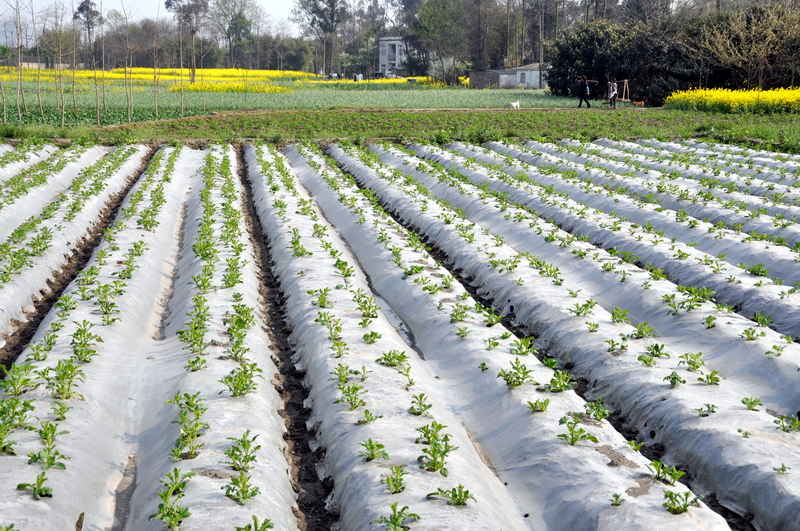Plastic sheeting can provide everything from shelter to collecting water to insulating plants.
In fact, it pays to have at least one roll of the stuff for immediate use and one for survival purposes at all times.
Collecting Rainwater
Though it might ruin your firewood, rain can be good for some things, too.
Namely, providing you with fresh drinking water. You just need a way to collect it, and making a catchment area out of plastic sheeting that drains down into your container is a good way to start.
Building a Solar Still
If you’re in a desert area (or anywhere else at a point in time when rain isn’t in the forecast) collecting rainwater to drink may not be an option. In situations such as these, building a solar still could save your life. Solar stills work by heating up the soil until the water in it evaporates then capturing that water.
To build one, all you need to do is dig a wide hole in the ground, secure a container at its center, line the hole with plastic sheeting, and secure the edge of the sheeting around the hole’s perimeter with large rocks, then place a fist-sized rock at the center of the sheeting directly above your container. Wait a few hours and you’ll have a supply of fresh, sterile drinking water.
Building a Greenhouse
The ability to grow plants year-round could prove invaluable during a disaster scenario. To do this in most climates, though, you will need to build a greenhouse. While there are expensive greenhouse kits you could purchase ahead of time, a wooden structure covered with transparent plastic sheeting will work nicely in a pinch, allowing you to grow food all year.
Protecting Your Plants from Frost
A late frost can be devastating to your plant’s survival and, if you are relying on them as a food source, your own survival as well. Plastic sheeting, however, can be combined with old blankets to ensure your plants stay protected from the elements. The night before an expected frost, just cover your plants with a blanket and then cover the blanket with plastic sheeting.
You want to be sure and put the blanket down first, though, as covering your plants with the plastic directly could damage them. And also be sure it’s not a very heavy blanket. You may even want to use stakes to keep some of the weight of the blanket off of your plants.
Trapping Heat
During the winter, heating your home may prove to be a constant challenge. In order to keep your home as warm as possible, you will want to limit the amount of space that has to be heated and close off any unused areas. To do this, cover the entrances to unused areas with plastic sheeting and cut them off from the source of your heat.
In addition to this, plastic sheeting can be used to block drafts coming in from doors and windows to keep your home a little warmer. Overall, plastic sheeting isn’t the best insulator, but it does block airflow pretty well, making it a convenient way to better control the climate in your house.
As you build your survival preparation cache, you should include at least one roll of plastic sheeting for emergency purposes on top of any rolls of plastic sheeting you use everyday.
It is invaluable in an emergency situation because it is so versatile.
To get more ideas on how to use plastic sheeting in both emergency and survival settings, please visit The Urban Survival Site.

I Agree
Dextertaught us all the value of good plastic sheeting.
I saw an ol man use black visquine over his garden. Poked holes in the sheeting atop the rows n planted seed/sprouts right in each rip. Not only did there no weeds grow, but his plants did really well. Never once did he re row dirt up to the plants, bcuz he didnt really need to since the dirt never much settled or eroded from rainwater. He used liquid fertilizer. But boy what a mess to clean up afterwards with all the dirt that washed up on top of it during grow season. Made for one fine garden tho…